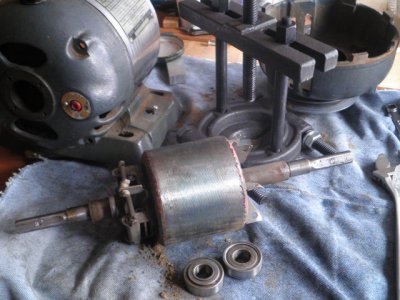Subject to where the motor mounted switch is located, that might be another way to do it. However, if you have rug rats or other knob twiddlers around, the motor mounted switch might be treated as a safety measure. Whenever you are done wtih the lathe, turn off the motor mounted switch. Someone just walking by who has an irresistible urge to flip the headstock mounted switch and does so will be rewarded with nothing happening.
If you do decide to tie the headstock mounted switch into the motor and leave the motor mounted switch in place, identify the hot wire coming from the switch. Disconnect it from its terminal and splice it to the black wire going to the headstock switch. Connect the white wire coming from the headstock mounted switch to the terminal from which the wire from the motor mounted switch was removed. And connect the green wire in the cord from the headstock mounted switch to some convenient grounding point at each end.

